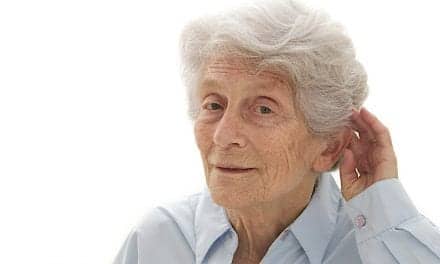It has been said that there are two definitions of “insanity”: 1) Getting into an intellectual argument with a 4 year old; and 2) Doing the same things you always did, the same way you always did them, and expecting different results. If for no other reason than this, dispensing professionals must grow with the new custom fitting methodologies. Provided that we accept the second definition as fact, we can be certain that— if we fit digital hearing instruments using analog methods and rules—we will get digitized analog fittings and less-than-optimal performance for the patient.1 A consistent methodology in the quality of hearing aid fittings will achieve greater patient satisfaction, resulting in reduced returns-for-credit and, ultimately, greater market penetration for hearing instruments.2
There is a good argument that instrument return rates are chiefly due to either too little or too much gain. The old standard amplifier rules were that input plus gain equaled output. This still applies to the digital electro-acoustic fitting. Patients’ rejection of hearing instruments are often based on the output of the instrument alone.
The patient’s stimulated auditory response must never exceed their loudness discomfort level (LDL) at any frequency or they will reject the fitting. Likewise, under-stimulation of the patient’s residual auditory area can result in poorly perceived sound quality and a reduction in word discrimination scores. This situation is less a function of the under-performance of the instrument than it is a reflection of the lack of synergy between a properly programmed instrument and a properly utilized residual auditory area.
Loudness discomfort levels can now be measured in-situ in many digital instruments. However, whatever the method for assessing loudness, this test should always be performed! A subjective test of equal loudness may not be absolutely necessary; however, assuring that the output response limits are appropriately established is absolutely essential. With the appropriate use of the digital hearing instrument technology, the patient’s uncomfortable loudness level (UCL) should never be exceeded.
Basic Suprathreshold Testing
The dynamic range for speech information should be maintained within the residual auditory capacity of each ear (and binaurally) whenever possible. Compression ratios should not be based on an audiogram using arbitrary normative data. This does not result in a custom electro-acoustic fitting. Instead, compression ratios should be determined based on suprathreshold test results for each ear on each patient. Only then will you will have achieved a true custom electro-acoustic fitting and a satisfied patient. Two fairly simple methods can be used for determining loudness discomfort levels (LDLs):
Using an Audiometer: Set the audiometer to produce warble tones, and instruct the patient to identify the LDLs at 250 Hz, 500 Hz, 1000 Hz, 2000 Hz, 3000 Hz, 4000 Hz and 6000 Hz. The patient should raise his/her hand (the authors find this more reliable than pushing a button). Repeat each frequency to verify the identify of the selected levels. Note: This can also be done binaurally to illustrate binaural summation effects and identify the frequencies involved in recruitment.
Using a Tympanometer: The contra-lateral acoustic middle ear muscle reflex thresholds can be measured at 250 Hz, 500 Hz, 1000Hz, 2000 Hz, 3000 Hz, 4000 Hz and 6000 Hz (if possible). Since this threshold represents the point (for that frequency) at which the ear goes “non-linear,” it is also the behavioral LDL for that frequency. Note: Contralateral acoustic middle ear muscle reflexes are measured in dB HL, whereas ipsilateral acoustic middle ear muscle reflex threshold measurements are calibrated in dB SPL.
LDL measurement—however it is made—is critical because, with manufacturers building hearing instruments that have frequency responses through 6000 Hz, it is now absolutely necessary to identify and understand how the patient’s auditory system functions through those same frequencies.
If you wish to make in-situ measurements with digital instrument software, it may be more efficient not to ask the patient about the loudness or pitch of the tone. Instead, while they wear the instrument, have them count aloud in a normal voice. One good way to corroborate their own loudness assessment is to watch their eyes for the ocular reaction that occurs when their UCL is reached. Modify the instrument and repeat if necessary. This measurement is critical for achieving the best performance from the digital algorithm for the patient’s ear. In addition, NOAH provides for UCL data entry. Most of the software for digital instruments incorporate these values into the performance determination for their proprietary algorithms/circuits.


|
References
1. McSpaden JB. Understanding less and less about more and more. Hearing Review. 2003;10(10):30-32.
2. Kochkin S: MarkeTrak VI: On the issue of value: Hearing aid benefit, price, satisfaction, and repurchase rates. Hearing Review. 2003;10(2):12-26.
Correspondence can be addressed to HR or Jay B. McSpaden, PhD, PO Box 1043, Jefferson, OR 97352; email: [email protected].





